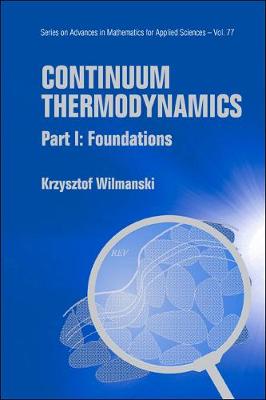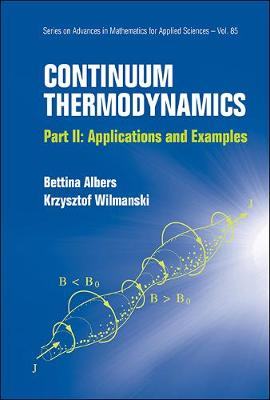Series on Advances in Mathematics for Applied Sciences
2 primary works
Book 77
This book is a unique presentation of thermodynamic methods of construction of continuous models. It is based on a uniform approach following from the entropy inequality and using Lagrange multipliers as auxiliary quantities in its evaluation. It covers a wide range of models — ideal gases, thermoviscoelastic fluids, thermoelastic and thermoviscoelastic solids, plastic polycrystals, miscible and immiscible mixtures, and many others. The structure of phenomenological thermodynamics is justified by a systematic derivation from the Liouville equation, through the BBGKY-hierarchy-derived Boltzmann equation, to an extended thermodynamics. In order to simplify the reading, an extensive introduction to classical continuum mechanics and thermostatics is included. As a complementary volume to Part II, which will contain applications and examples, and to Part III, which will cover numerical methods, only a few simple examples are presented in this first Part. One exception is an extensive example of a linear poroelastic material because it will not appear in future Parts.The book is the first presentation of continuum thermodynamics in which foundations of continuum mechanics, microscopic foundations and transition to extended thermodynamics, applications of extended thermodynamics beyond ideal gases, and thermodynamic foundations of various material theories are exposed in a uniform and rational way. The book may serve both as a support for advanced courses as well as a desk reference.
Book 85
Continuum Thermodynamics - Part Ii: Applications And Examples
by Krzysztof Wilmanski and Bettina Albers
Published 30 December 2014
This second part of Continuum Thermodynamics is designed to match almost one-to-one the chapters of Part I. This is done so that the reader studying thermodynamics will have a deepened understanding of the subjects covered in Part I. The aims of the book are in particular: the illustration of basic features of some simple thermodynamical models such as ideal and viscous fluids, non-Newtonian fluids, nonlinear solids, interactions with electromagnetic fields, and diffusive porous materials. A further aim is the illustration of the above subjects by examples and simple solutions of initial and boundary problems as well as simple exercises to develop skills in the construction of interdisciplinary macroscopic models.

